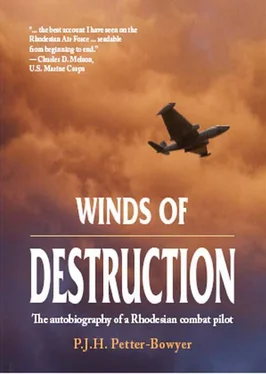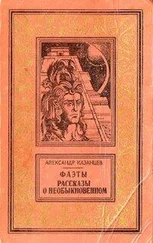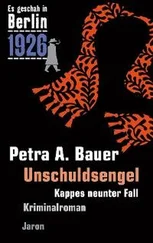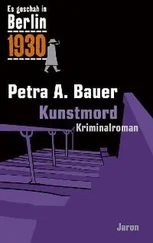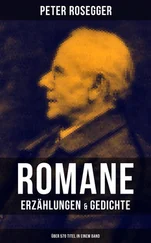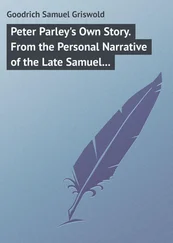Peter Petter-Bowyer - Winds of Destruction
Здесь есть возможность читать онлайн «Peter Petter-Bowyer - Winds of Destruction» весь текст электронной книги совершенно бесплатно (целиком полную версию без сокращений). В некоторых случаях можно слушать аудио, скачать через торрент в формате fb2 и присутствует краткое содержание. Город: Solihull, Pinetown, Год выпуска: 2012, ISBN: 2012, Издательство: Helion & Company, 30° South Publishers, Жанр: Биографии и Мемуары, на английском языке. Описание произведения, (предисловие) а так же отзывы посетителей доступны на портале библиотеки ЛибКат.
- Название:Winds of Destruction
- Автор:
- Издательство:Helion & Company, 30° South Publishers
- Жанр:
- Год:2012
- Город:Solihull, Pinetown
- ISBN:9781908916754
- Рейтинг книги:5 / 5. Голосов: 1
-
Избранное:Добавить в избранное
- Отзывы:
-
Ваша оценка:
- 100
- 1
- 2
- 3
- 4
- 5
Winds of Destruction: краткое содержание, описание и аннотация
Предлагаем к чтению аннотацию, описание, краткое содержание или предисловие (зависит от того, что написал сам автор книги «Winds of Destruction»). Если вы не нашли необходимую информацию о книге — напишите в комментариях, мы постараемся отыскать её.
Winds of Destruction — читать онлайн бесплатно полную книгу (весь текст) целиком
Ниже представлен текст книги, разбитый по страницам. Система сохранения места последней прочитанной страницы, позволяет с удобством читать онлайн бесплатно книгу «Winds of Destruction», без необходимости каждый раз заново искать на чём Вы остановились. Поставьте закладку, и сможете в любой момент перейти на страницу, на которой закончили чтение.
Интервал:
Закладка:
Under the leadership of Lieutenant-Colonel E.W.S. Jacklin, the dozen or so officers and men of the unit set about acquiring some aircraft. The Royal Air Force contributed a war-surplus Anson light transport aircraft, and then a major salvage exercise started. The men went on forays through the old RAF maintenance depots and even scrap dumps. Tools, raw materials, spares, supplies and even trained personnel filtered through to the little unit at Cranborne from all over the country. Eventually, using basic tools and equipment, the unit had rebuilt six scrapped and abandoned Tiger Moths.
On 28 November 1947, the Government Gazette No 945 carried the notice establishing the Air Force as a Permanent Unit of the Rhodesian Staff Corps, and this was the beginning of the Southern Rhodesian Air Force to come. The six rebuilt Tiger Moths were joined by six Harvard trainers purchased from the Rhodesian Air Training Group, and later twelve more Harvards were obtained from South Africa at nominal prices.
The work paid off in progressive expansion—more ex-Air Force personnel joined the unit, and gradually a varied selection of aircraft was acquired. By 1951, a Leopard Moth, a Dakota, Rapides, Ansons and Austers had been collected from a variety of sources, and the unit operated a small regular element with one active auxiliary squadron—No 1 Squadron.
By this time the Berlin Blockade, the clamping of the Iron Curtain across Europe and the onset of the Korean War had made it obvious to all that the preservation of peace was to be more a matter of armed preparedness than of wishful thinking. So once again the Southern Rhodesian Government made a contribution to the defence of the Commonwealth—this time it was in the form of two fighter squadrons.
From Britain twenty-two Spitfire Mk22 aircraft were successfully ferried out in spite of dire predictions and a certain amount of betting from a number of aviation experts. Fulltime training was then re-introduced in the form of the ‘Short Service’ training scheme.

In 1952 the Air Force moved from Cranborne to Kentucky Airport, which subsequently became the huge airfield jointly used by New Sarum Air Force Station and Salisbury International Airport. This was the first permanent home of the Air Force, and it was the first time that it had occupied buildings and facilities specifically designed for its purposes.
Increased obligations to the RAF and the need to modernise became issues in making the decision to withdraw the Spitfires from service. Painful though it was for all concerned, single-seater De Havilland Vampire FB9 jets replaced the much-loved Spitfires. Later T11 two-seater jet trainers were added.
In addition to the Vampire fighter/bombers, expansion continued with the acquisition of Provost piston-engined trainers. Seven more Dakotas and two Pembrokes were acquired to replace the Ansons and Rapides, and further aircrew and technicians were recruited. By the beginning of 1956, the Air Force boasted four active squadrons, two Vampire fighter squadrons, a transport squadron and a flying training squadron.
Africa was now being subjected to the first of many political changes leading up to the withdrawal of the colonising nations. The Federation of Rhodesia and Nyasaland was formed in 1953 and, in its turn, caused some major changes within the Air Force.
The title was changed to Rhodesian Air Force, with Queen Elizabeth conferring the ‘Royal’ prefix. As the Royal Rhodesian Air Force, the unit forsook its army ranks and khaki uniforms and adopted ranks and uniforms similar to those of the Royal Air Force.
But the major change of the Federal inception was one of scope and responsibility. From being a minor, self-contained force, preoccupied with territorial defence, the RRAF was now responsible for the defence of the Federation as a whole and was also to acquire wider responsibility as a part of the Royal Air Force’s potential in the Middle East.
At the conclusion of the Second World War, the RAF retained its RTG airfield, Thornhill, where flying training on Harvards continued. This was the largest and best-equipped RTG airbase sited close to the Midlands town of Gwelo. It remained an active RAF base until its closure in 1955 when it was taken over by the Royal Rhodesian Air Force.
With ever-increasing commercial flights in and out of Salisbury Airport, Group Headquarters decided to reduce congestion at the jointly used facilities by moving all Air Force training to Thornhill. Initially this was only possible for piston operations, using existing grass runways. Two years of work during 1956 and 1957 were needed to build a tar macadam runway with taxiways, concrete hard standings and a modern control tower, incorporating radar, before jet training could commence.
In line with RAF practice, the RRAF pilot-training scheme was known as a Short Service Unit (SSU). Successful applicants for pilot training were inducted as officer cadets for a two-year training course. Failure at any point in training resulted in the immediate release of a student with no obligation on either side. However, students who gained their wings and had completed advanced-weapons training had the option of either applying for a medium-service commission or returning to civilian life. Air Headquarters was under no obligation to accept those who applied for medium service.
No 1 SSU was inducted in 1952 with successive intakes occurring at six-monthly intervals. Tiger Moths, Harvards and Spitfires served the training needs initially until Provosts and Vampires replaced them. In 1956, the intake frequency was reduced to one intake a year when No 9 SSU was the first to undergo Basic Flying School (BFS) training at Thornhill.
At the conclusion of BFS in December 1956, No 9 SSU had to move to New Sarum for the Advanced Flying Training (AFS) on Vampires because Thornhill was not yet ready to accommodate jets. The first course to undergo BFS, AFS and OCU (Operational Conversion Unit) at Thornhill was No 10 SSU. This was the course I attended.

Younger days

AT 13:15 ON 2 JUNE 1936, Doctor Ritchken’s regular lunchtime break was interrupted to attend to my mother who was in labour at the Lady Chancellor Maternity Home in Salisbury. No complications occurred with my birth and I was declared to be a strong and health baby.
My father and mother were both from England. Dad was born in Southampton and Mum in Brighton. Dad came from a long line of naval pilots who brought many thousands of ships safely down Southampton’s Water. Not surprisingly Dad had hoped to join the Royal Navy but he was rejected for being unable to differentiate between purple and mauve. So, in 1923 at the age of 17 he set out to see the world as a hired hand on a steam-powered cargo ship. In New York he explored the big city, wearing the only clothes he possessed—a rugby jersey and shorts. After roaming the seas he found New Zealand to be the right place to stay ashore and to try and settle down.
He did well as a lumberman. He also worked on sheep farms and played a good deal of rugby in his free time. There he met his lifelong friend, Alan Martin, who later became my godfather. Alan interested Dad in opportunities being offered by the British Government in far-off Southern Rhodesia; so they moved to Africa together.
Читать дальшеИнтервал:
Закладка:
Похожие книги на «Winds of Destruction»
Представляем Вашему вниманию похожие книги на «Winds of Destruction» списком для выбора. Мы отобрали схожую по названию и смыслу литературу в надежде предоставить читателям больше вариантов отыскать новые, интересные, ещё непрочитанные произведения.
Обсуждение, отзывы о книге «Winds of Destruction» и просто собственные мнения читателей. Оставьте ваши комментарии, напишите, что Вы думаете о произведении, его смысле или главных героях. Укажите что конкретно понравилось, а что нет, и почему Вы так считаете.
